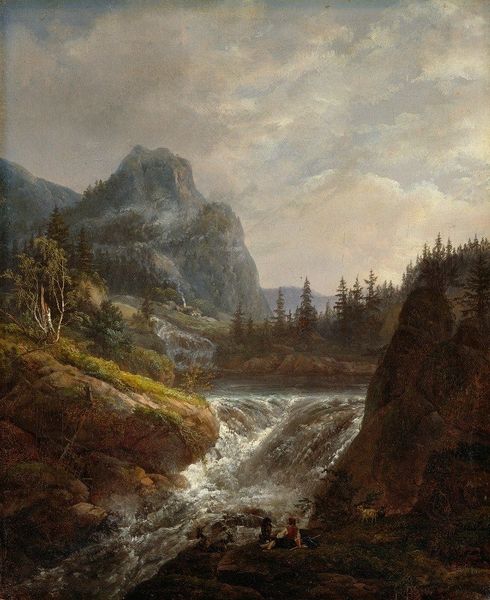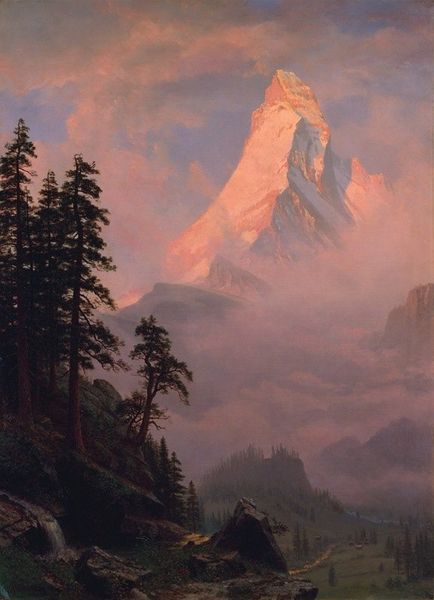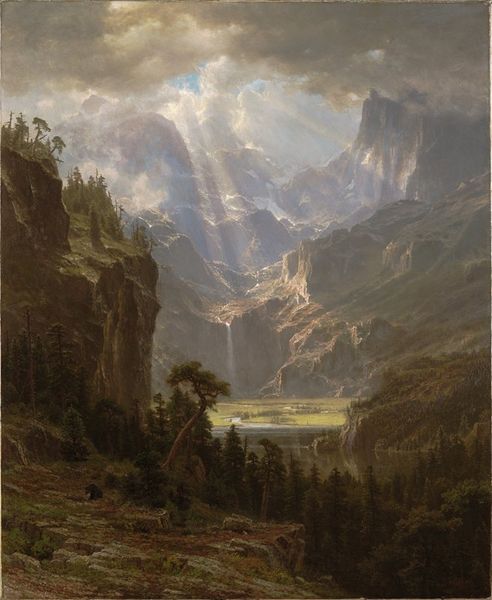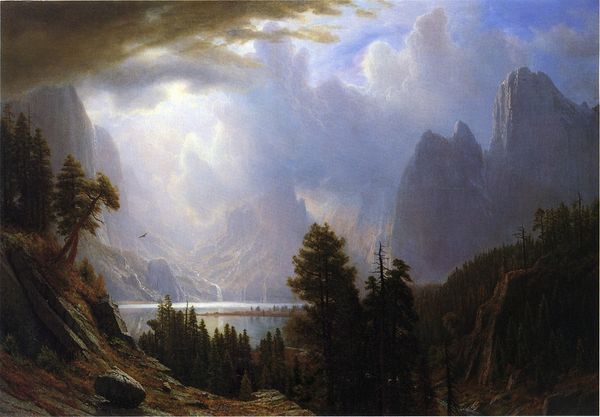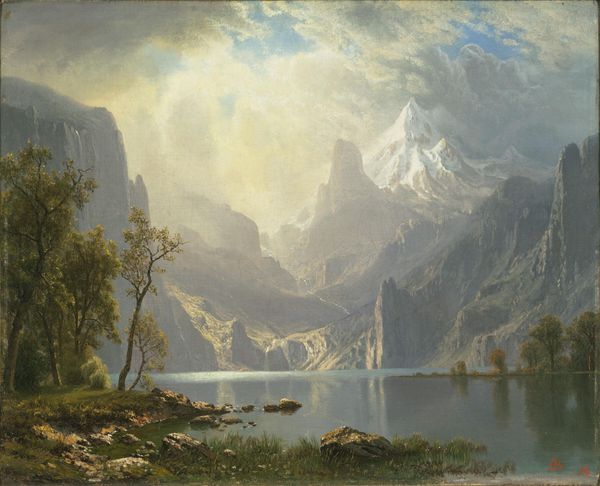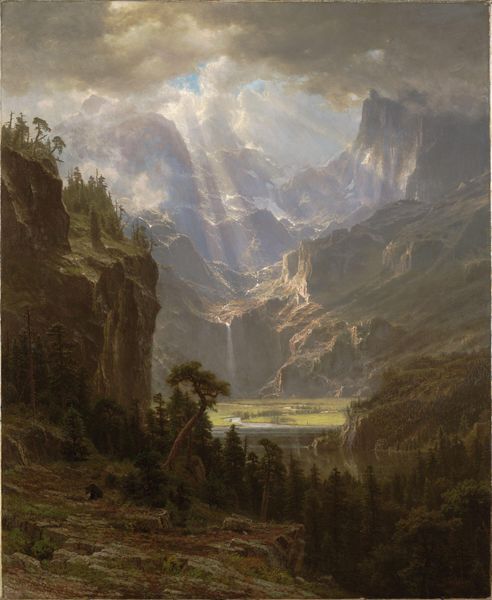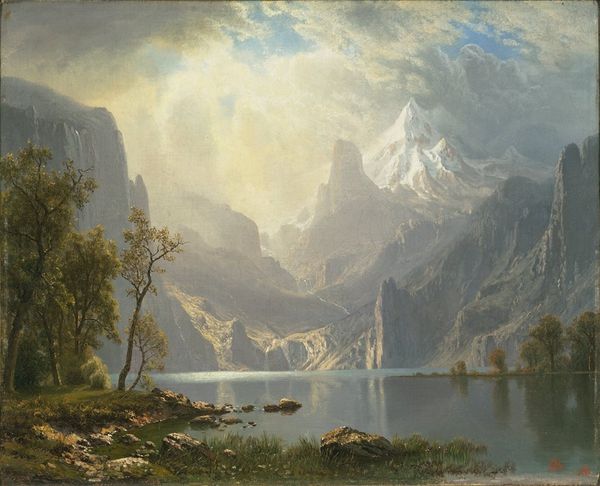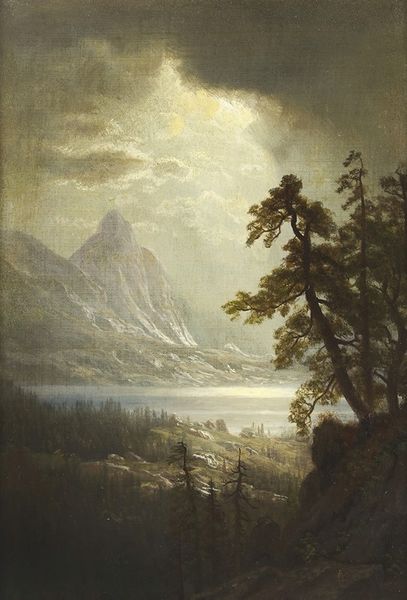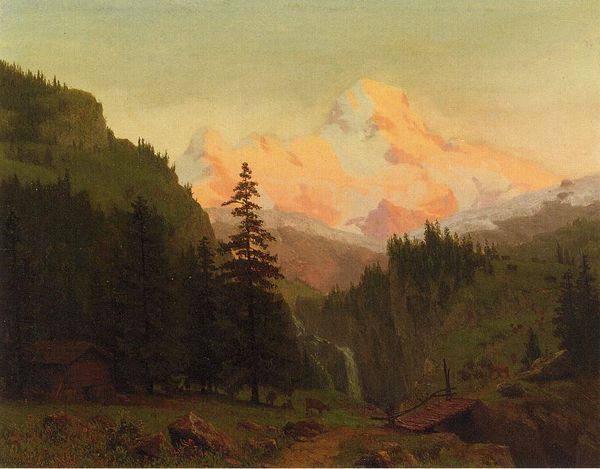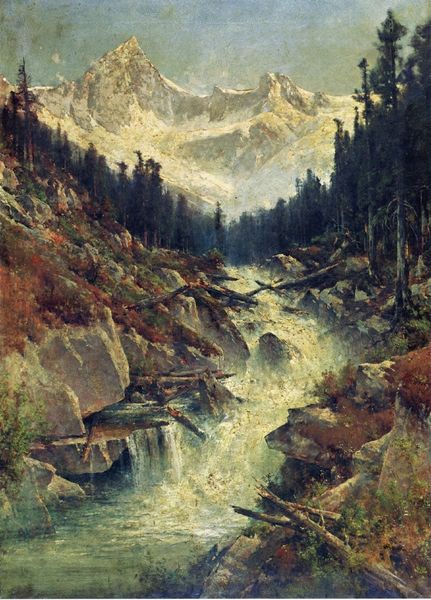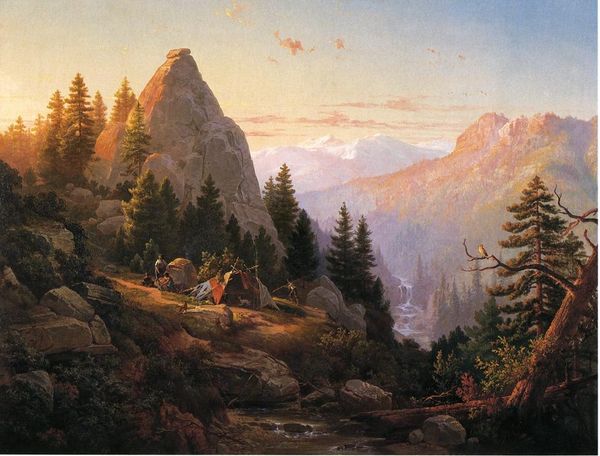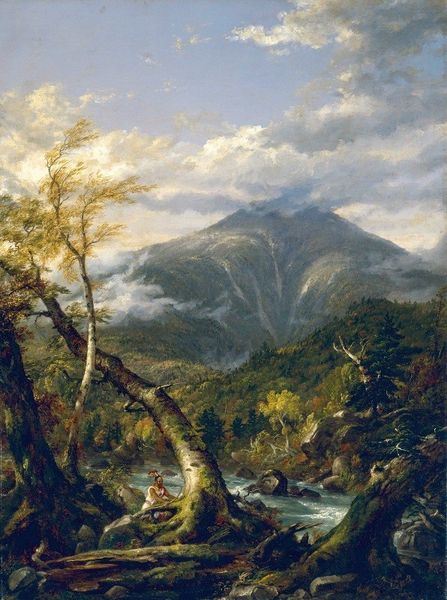
Dimensions: 60.96 x 45.72 cm
Copyright: Public domain
Curator: It’s interesting how quickly landscape painting became an emblem of nationhood, particularly in America. Here, we see Albert Bierstadt's "Cascading Falls at Sunset," an oil on canvas completed in 1879. What strikes you immediately about this image? Editor: That feeling of awe. Bierstadt definitely leaned into the Romantic era's concept of the sublime. I'm also struck by the contrast he sets up—the delicate sunset light versus the raw, imposing power of the mountains and that forceful waterfall. It’s nature presented as both beautiful and, honestly, a bit terrifying. Curator: Precisely. Consider the cultural context. This was painted during a period of intense westward expansion in the United States, driven by Manifest Destiny. Artists like Bierstadt played a role in visually constructing and idealizing the American landscape. The waterfall becomes a potent symbol, suggesting untamed power and limitless potential. Editor: I think that "untamed" idea is crucial, though potentially loaded. Bierstadt, like many in the Hudson River School, often omitted signs of Indigenous presence in these vistas, contributing to a narrative of empty, unclaimed land ready for colonization. This image, then, while technically beautiful, actively erases histories and justified dispossession. Curator: I hadn't considered the notion of erasure, but that's an important interpretation, considering what a significant subject American Indians are in art history. If we reflect on symbols, consider water. Its movement and power also carry associations with cleansing and purification—suggesting, perhaps, a "fresh start" for the nation, again obscuring existing realities. Editor: Right. And let's look at the color palette. The sunset hues give everything a golden, almost Edenic glow. This romanticized view of nature conveniently glosses over the environmental destruction caused by industrialization and resource extraction that were happening simultaneously. There's a real tension there. Curator: Indeed. The enduring popularity of works such as this points to how powerful these idealized images remain. By dissecting its components—light, composition, and historical context—we see that, this image has cultural weight and how it shapes, even now, our understanding of the American landscape. Editor: Absolutely. Questioning the romantic narratives allows us to see the gaps and silences—ultimately challenging a single, dominant reading of American history.
Comments
No comments
Be the first to comment and join the conversation on the ultimate creative platform.
